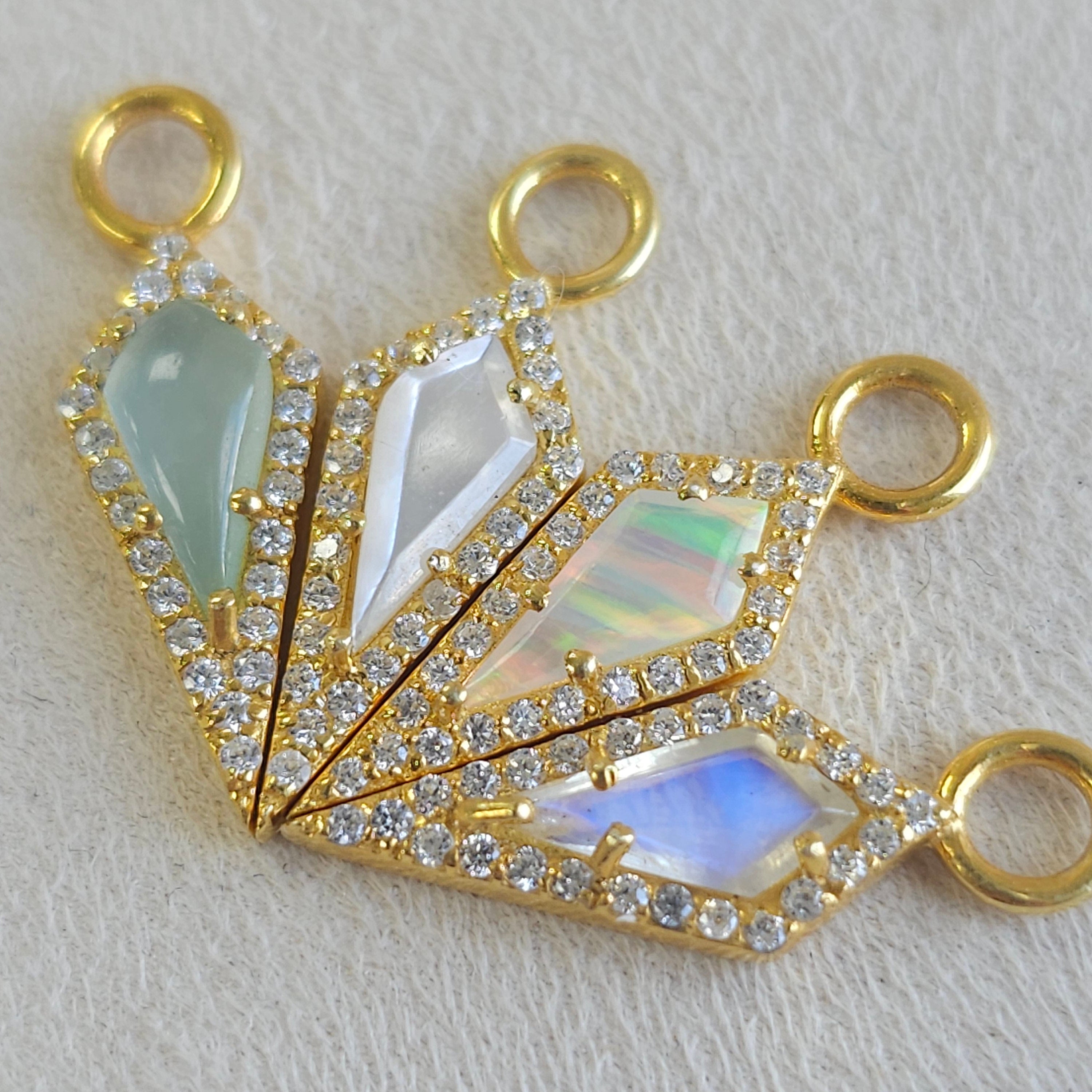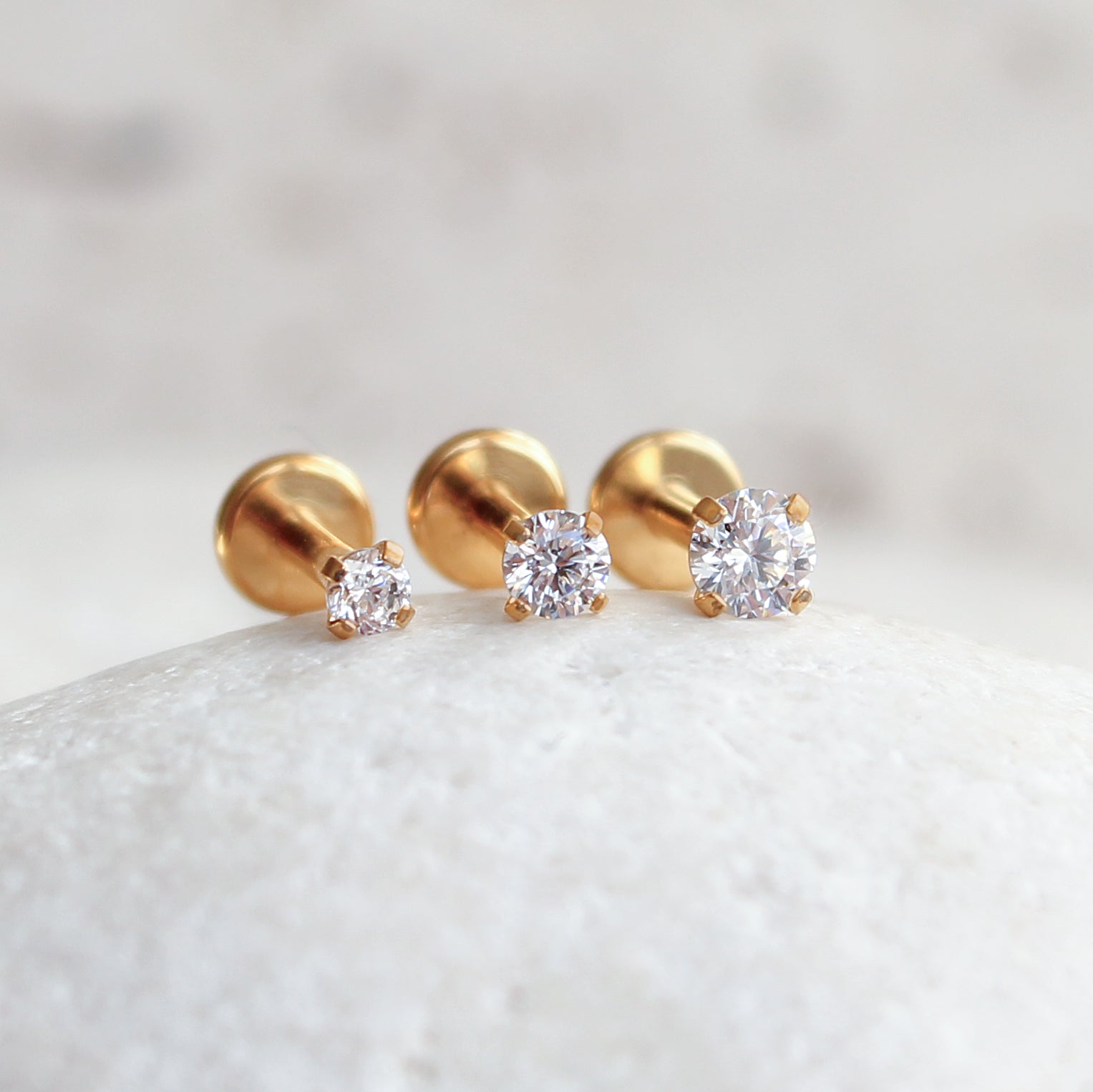The Complete Rook Piercing Size Guide:
Rook piercings have taken the ear adornment world by storm, known for their distinctive and stylish appearance. Whether you're contemplating getting a rook piercing or already have one, having the right sizing information is crucial for a comfortable and aesthetically pleasing outcome. In this comprehensive guide, we'll walk you through all the details you need to know about rook piercing sizes, covering everything from jewellery choices to tips for a smooth healing process.
Anatomy and Placement:
Before we delve into sizing specifics, let's acquaint ourselves with the anatomy and placement of the rook piercing. The rook refers to the ridge of cartilage situated above the tragus and nestled snugly in the inner part of the ear. This unique placement offers an alluring and one-of-a-kind canvas for a variety of creative jewellery options.
Jewellery Types for Rook Piercings:
Rook piercings offer an extensive range of jewellery choices to cater to various styles and preferences. Here are some popular options:
- Curved Barbells: These are a common choice for rook piercings as their shape follows the natural curve of the ear's rook area. (Explore our barbell collection)
- Clicker Hoops: Hinged rings that "click" shut, making insertion and removal a breeze while maintaining a secure fit. (Browse our clicker collection)
Sizing Considerations for Rook Barbells and Clicker Hoops:
Choosing the perfect piece of jewellery for your rook piercing involves a few key considerations, with slight differences between selecting a barbell and a hoop. Let's take a closer look at these factors:
Rook Barbells:
- Gauge: The gauge size refers to the thickness or diameter of the jewellery used for the rook piercing. It is denoted by a number followed by the letter "G," which stands for "gauge." The most common gauge size for rook barbells are 16G (1.2mm)
- Length: This refers to the size of the bar itself, typically ranging from 6mm (1/4") to 8mm (5/16") for rook piercings. An 8mm (5/16") barbell is often used, but the most suitable length can vary based on your ear's thickness and the precise placement of the piercing. It's important to choose a length that allows your piercing to breathe comfortably without causing unnecessary pressure or irritation.
- Design: Rook barbells come in various designs, featuring decorative ends like gemstones or unique shapes. When selecting a barbell, consider your personal style and the occasions you'll be wearing it for. A simple, minimalistic design might be perfect for everyday wear, while a more ornate barbell could be ideal for special events.
- Gauge: Similar to rook barbells, the standard gauge sizes for clicker hoops are 16G (1.2mm).
- Diameter: The size of the hoop should correspond with the thickness of your rook and your personal taste. Smaller diameters offer a snug, understated look, while larger diameters create a more noticeable and bold statement.
- Design: Clicker hoops can be plain or feature decorative elements such as gemstones or crystals. Just like with barbells, your hoop's design should reflect your personal style and suit the occasion. Opt for a simple hoop for everyday wear and simply add an earring charm for a more statement look!
Remember, the perfect piece of jewellery should strike a balance between aesthetics and comfort, aligning with your unique style while ensuring a happy, healthy rook piercing. With these sizing considerations in mind, you're well on your way to finding the ideal adornment for your rook piercing!
Healing and Downsizing:
Proper healing is vital for a successful rook piercing. The initial jewellery used for the piercing should accommodate swelling, but downsizing the jewellery to a shorter or smaller diameter is recommended as the healing progresses. Consult with your piercer for guidance on the appropriate timing for downsizing and selecting the ideal jewellery for your personal anatomy.
Achieving the perfect fit for your rook piercing involves a thoughtful and informed approach. By understanding the anatomy of your ear, selecting the appropriate gauge size, and choosing jewellery that reflects your personal style, you can ensure a comfortable aesthetic piercing.
However, we advise you to seek guidance from a professional piercer as they will be able to advise you depending on your unique anatomy and preferences.
Explore our full collection of earrings perfect for your rook
Frequently asked questions for a rook piercing:
What is a rook piercing?
A rook piercing is a perforation of the antihelix of the ear for the purpose of inserting and wearing a piece of jewellery. It's located above the tragus on the ridge between the outer and inner conch.
How painful is a rook piercing?
Pain perception varies from person to person, but most describe the feeling as a brief, intense pinch. Some tenderness might be present during the healing process.
How long does a rook piercing take to heal?
Typically, a rook piercing may take between 6 to 12 months to fully heal, but this can vary based on individual healing rates.
How should I clean and care for my rook piercing?
Regularly cleaning your rook piercing with saline solution is recommended. Refrain from unnecessary twisting or over-cleaning to avoid irritation.
Can I get my rook pierced with a hoop?
Starting with a curved barbell is generally advised for rook piercings to promote optimal healing. A hoop can be considered once the piercing is entirely healed.
What are the risks associated with rook piercings?
Rook piercing complications can encompass infection, keloids, migration of the piercing, or allergic reactions to the jewellery.
How do I know if my rook piercing is infected?
Signs of an infection include persistent redness, unusual warmth, continuous pain, unusual discharge, and swelling. If an infection is suspected, consult your piercer.
Can I sleep on my rook piercing?
It's recommended not to sleep on the side with your rook piercing during its healing phase to avoid irritation and potential issues. Using a travel pillow can be helpful during this period.
When can I change the jewellery in my rook piercing?
Wait until your rook piercing has fully healed, which might be between 6 to 12 months, before attempting to change the jewellery.
What is the standard size for a rook piercing?
The usual gauge for a rook piercing is 16G, though diameter and length can vary based on individual preferences and anatomy.
What gauge is my rook piercing?
A rook piercing is generally done using a 16-gauge needle. However, some piercers might opt for different gauges (e.g. 14G or 18G) based on client preference or anatomical requirements.
What size ring do I need for a rook?
After your rook piercing has fully healed, a ring size between 8mm to 10mm typically works well, but the ideal size can vary depending on individual anatomy.
What size bar do I need for a rook?
For the initial rook piercing, a bar ranging from 6mm to 8mm is commonly used to account for swelling. Adjustments might be necessary as healing progresses.
How do I find out what size bar I need for my rook?
Choosing the right bar size for your rook piercing is crucial for comfort and aesthetics. Consult your piercing professional, consider the current stage of healing, visit a reputable piercing studio, or measure your existing jewellery for guidance.
Can I use a regular earring in my rook?
Using a standard earring for a rook piercing isn't typically recommended. The gauge, length, and material might not be ideal, potentially leading to complications or discomfort. Consult a piercing professional before making any changes.
What type of jewellery is best for a rook piercing?
Starting with a curved barbell made of titanium or surgical steel is often recommended for rook piercings. These materials are known for being hypoallergenic and causing less irritation.
Will I be able to wear earphones or headphones with a rook piercing?
Over-the-ear headphones are usually more comfortable while your rook piercing is healing. It's best to avoid in-ear headphones during the early healing stages to minimise irritation.




